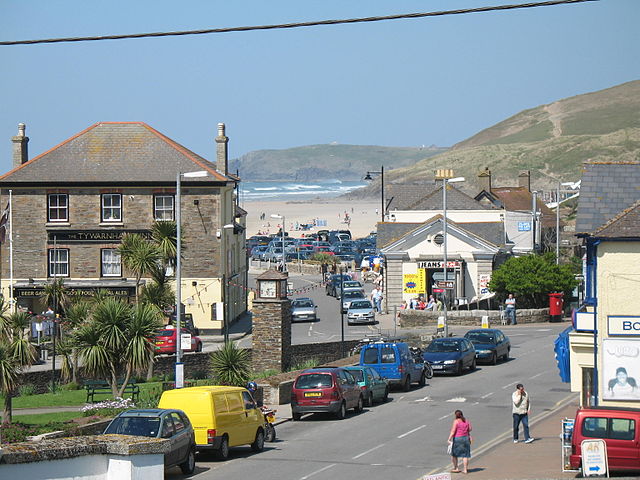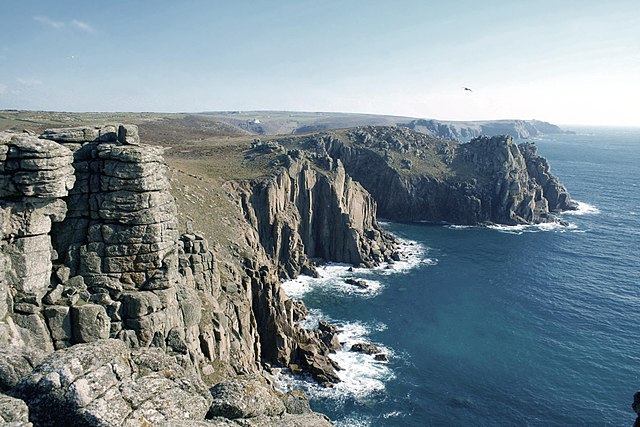Perranporth is a seaside resort town on the north coast of Cornwall, England, United Kingdom. It is 2.1 miles east of the St Agnes Heritage Coastline, and around 7 miles south-west of Newquay. Perranporth and its 2 miles (3 km) long beach face the Atlantic Ocean. It has a population of 3,066, and is the largest settlement in the civil parish of Perranzabuloe. It has an electoral ward in its own name whose population was 4,270 in the 2011 census.
Perran Beach from Droskyn Point
Perranporth Boating Lake
Perranporth town centre, with the beach in the background
Image: Perranporth Beach from air Fossick
Cornwall is a ceremonial county in South West England. It is recognised by Cornish and Celtic political groups as one of the Celtic nations, and is the homeland of the Cornish people. The county is bordered by the Atlantic Ocean to the north and west, Devon to the east, and the English Channel to the south. The largest settlement is Falmouth, and the county town is the city of Truro.
Image: The stamps and whim engine house at Wheal Coates geograph.org.uk 1476958
Image: St Michael's Mount View
Image: A walk on Bodmin Moor, Cornwall (3), 30 Sept. 2010 Flickr Phillip C
Cliffs at Land's End








